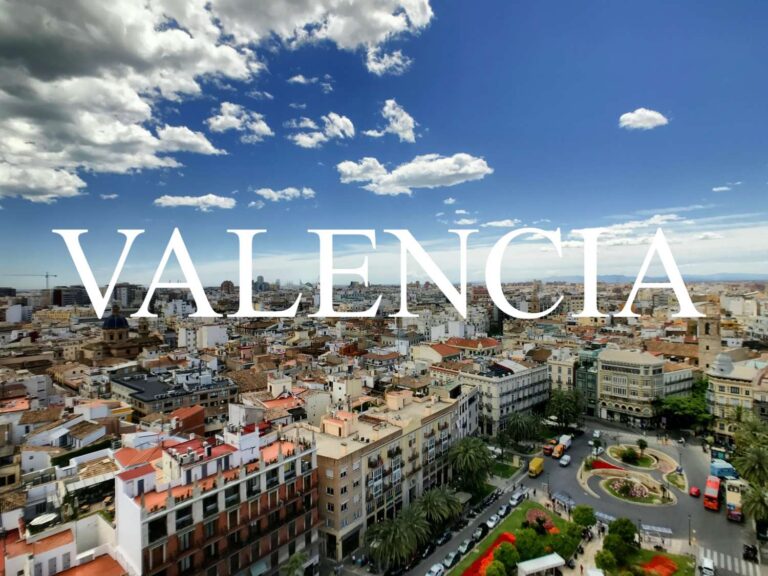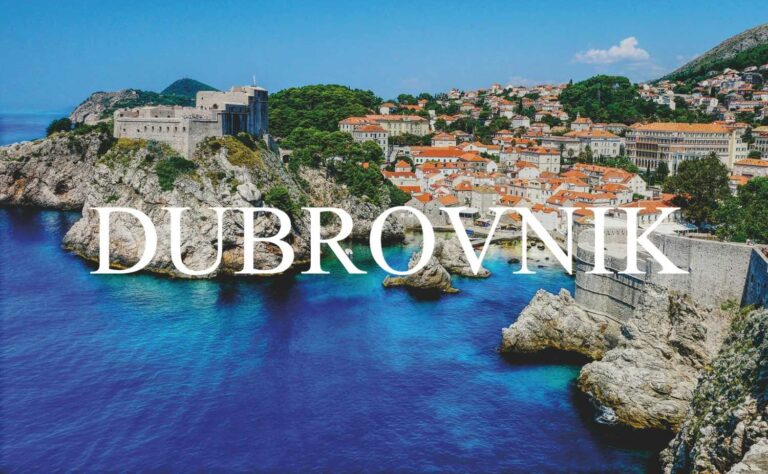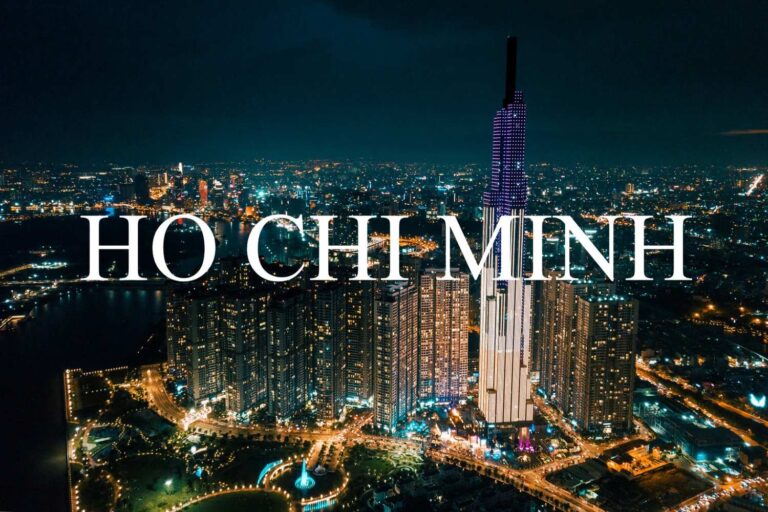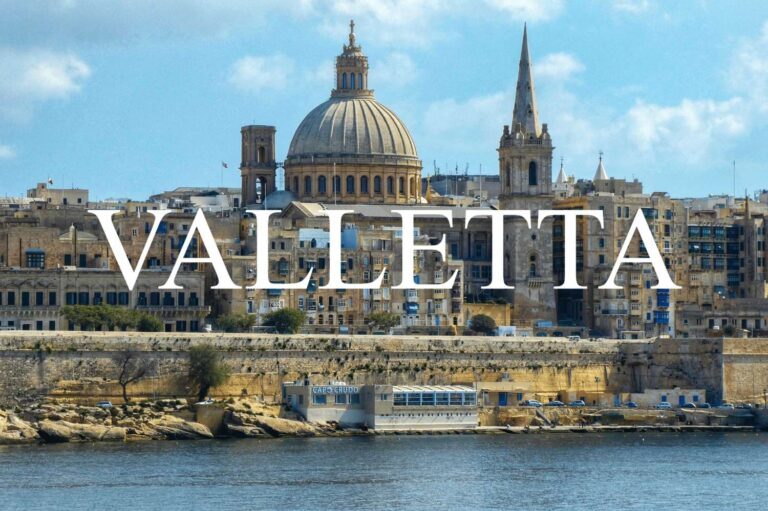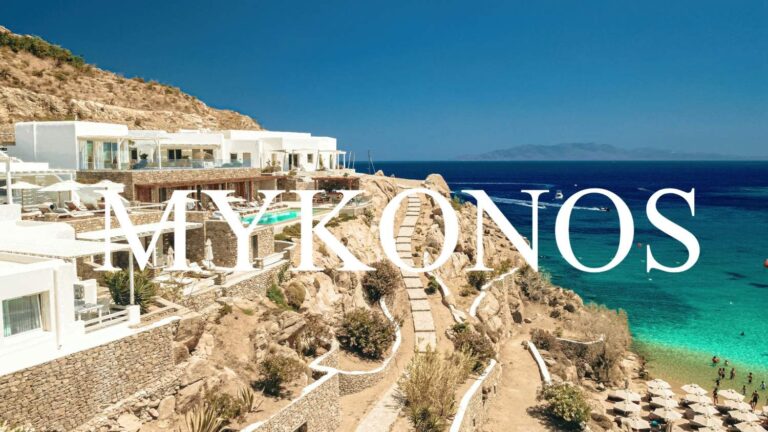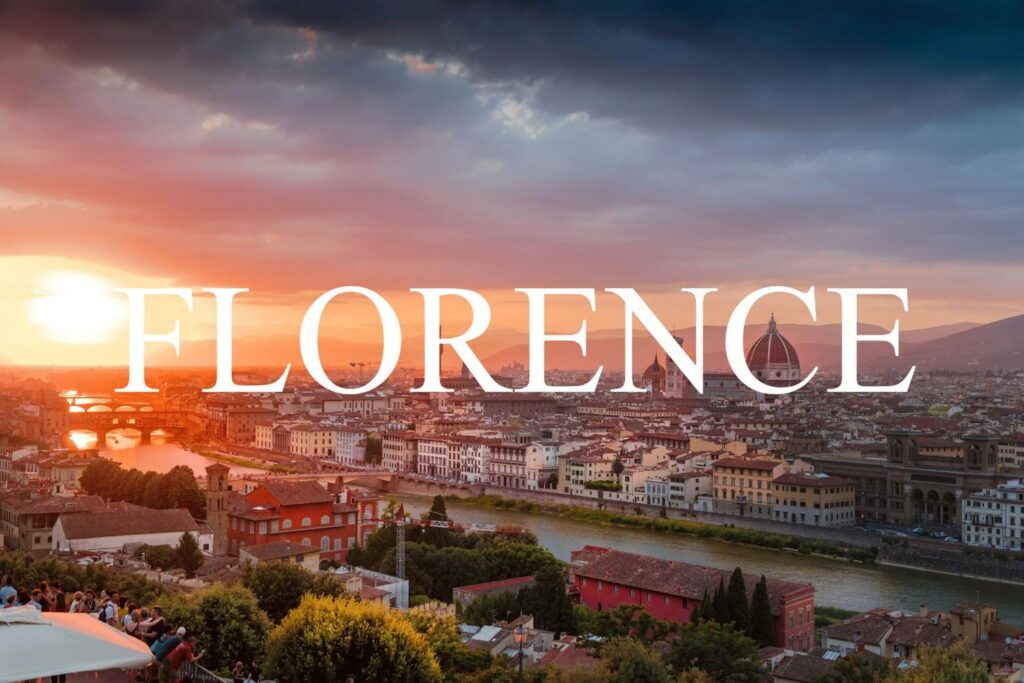
Florence, often called the jewel of Tuscany, is a captivating city where centuries of art, history, and culture come vividly alive at every turn. Renowned worldwide as the birthplace of the Renaissance, Florence invites visitors to step back in time and immerse themselves in an extraordinary blend of stunning architecture, masterful art, and vibrant local traditions. From the awe-inspiring dome of the Florence Cathedral (Duomo) to the impressive collections housed in the Uffizi Gallery and the charming atmosphere of the Piazza della Signoria, the city offers endless opportunities to experience Italy’s rich heritage.
Strolling through Florence’s cobblestone streets, you’ll discover quaint artisan workshops, bustling markets, and cozy cafés serving authentic Tuscan cuisine. Whether you’re marveling at Michelangelo’s David, exploring the historic Ponte Vecchio bridge, or simply enjoying a sunset view over the Arno River, Florence promises unforgettable moments for art lovers, history enthusiasts, and curious travelers alike.
To make the most of your trip, it’s important to know the best places to visit in Florence and the ideal time to experience the city’s enchanting charm without the crowds. This guide will help you plan a perfect visit to this timeless Italian treasure.
Best Places to Visit in Florence
The Uffizi Gallery
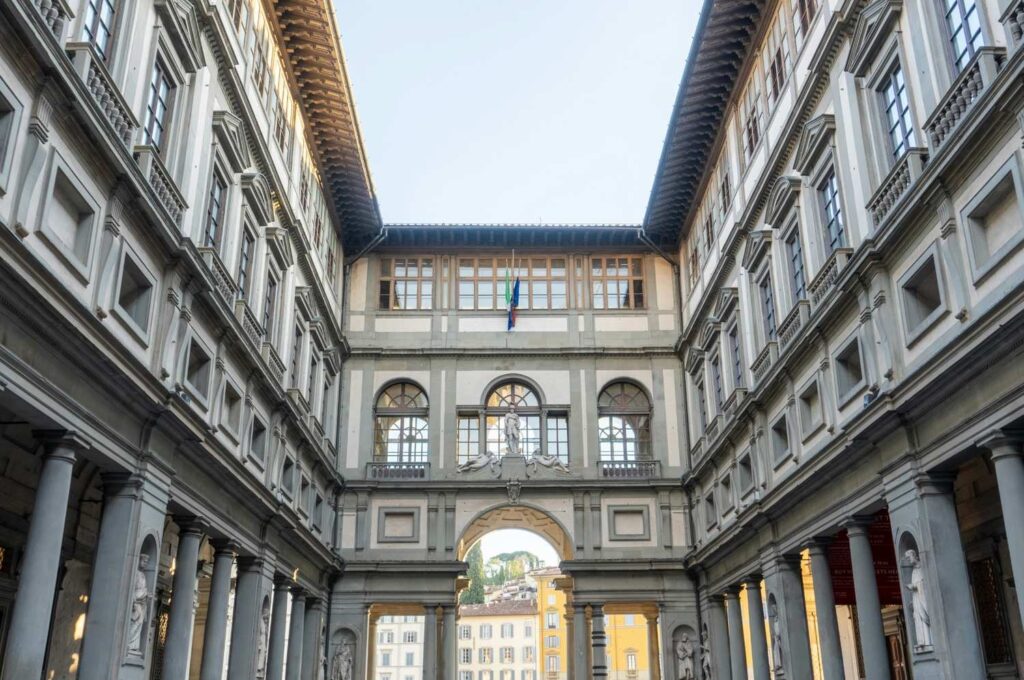
Photo by Álvaro Rotellar on Unsplash
Nestled in the historic heart of Florence, the Uffizi Gallery is one of the most prestigious and visited art museums in the world. Home to an unparalleled collection of Renaissance masterpieces, it offers a captivating journey through the evolution of Western art, showcasing works by some of history’s greatest artists. Whether you’re an art aficionado or a curious traveler, the Uffizi promises an inspiring and immersive cultural experience.
🌟 Highlights of The Uffizi Gallery
🖼️ Iconic Renaissance Masterpieces
The Uffizi’s collection features an extraordinary lineup of artworks, including:
- Sandro Botticelli’s The Birth of Venus and Primavera — These ethereal paintings epitomize the beauty and mythology of the Renaissance.
- Leonardo da Vinci’s Annunciation — A stunning example of Leonardo’s early mastery of light and perspective.
- Michelangelo’s Doni Tondo (Holy Family) — A rare painting by the sculptor that showcases his unique style.
- Caravaggio’s dramatic Medusa head painting — Known for its intense realism and use of chiaroscuro.
- Titian’s vibrant portraits and mythological scenes — Representing the peak of Venetian Renaissance art.
🏛️ Architectural Marvel
The Uffizi Gallery building itself is a masterpiece. Commissioned by Cosimo I de’ Medici and designed by Giorgio Vasari in the 16th century, the elongated U-shaped structure overlooks the Arno River and Piazza della Signoria. Walking through its elegant corridors, you experience a perfect blend of art and architecture.
🎨 Diverse and Extensive Collections
The museum is divided into themed rooms covering classical mythology, biblical scenes, portraits, and sculptures. Its collection spans from medieval times through the Renaissance and into the Baroque era, allowing visitors to trace the development of artistic techniques and styles.
📚 Enriching Educational Resources
Visitors can enhance their experience with expert-led guided tours, detailed audio guides available in multiple languages, and interactive apps. The museum’s knowledgeable staff also offer insights into the stories behind each masterpiece.
🛍️ Museum Shop & Café with a View
After exploring the galleries, relax at the Uffizi’s café that offers stunning views of Florence’s skyline, including the Ponte Vecchio. The museum shop offers beautifully crafted art books, prints, and unique souvenirs inspired by the collection.
🚗 How to Get There
- By Public Transport:
The Uffizi Gallery is easily accessible by bus lines C2 and 6, with stops near Piazza della Signoria. - On Foot:
Located in Florence’s historic center, it’s a short, scenic walk from the Duomo, Ponte Vecchio, and other main landmarks. - By Taxi:
Taxis can drop you off near the entrance on Via della Ninna or Piazza della Signoria.
🕒 Visitor Information
- Opening Hours:
Tuesday to Sunday, from 8:15 AM to 6:50 PM (last admission at 6:05 PM). Closed on Mondays and select holidays. - Entry Fee:
Standard tickets cost around €20 to €25, with reduced rates for EU citizens aged 18-25 and free entry for children under 18. - Recommended Visit Duration:
To fully appreciate the extensive collection and take breaks, allocate 2 to 3 hours or more. - Accessibility:
The Uffizi is wheelchair accessible, with ramps and elevators available. Assistance is offered on request.
💡 Travel Tips
- 🎟️ Book Tickets in Advance:
The Uffizi is one of Italy’s busiest museums, especially during peak tourist seasons. Secure your skip-the-line tickets online well in advance to avoid long queues. - 👟 Wear Comfortable Shoes:
The museum’s vast galleries require considerable walking, so dress for comfort. - 📸 Photography Guidelines:
Photography without flash is permitted in most areas but always check signage or ask staff to avoid damaging artworks. - 🕊️ Best Time to Visit:
Early morning openings or late afternoon visits tend to be less crowded. Weekdays outside the summer months are ideal. - 🗣️ Guided Tours & Audio Guides:
Consider joining a guided tour or renting an audio guide to gain deeper insights into the art, artists, and Florence’s rich history.
The Uffizi Gallery stands as a testament to Florence’s pivotal role in art history and the Renaissance movement. Its unmatched collection, combined with the breathtaking setting along the Arno River, offers visitors a deeply enriching experience. For anyone passionate about art, history, or culture, a visit to the Uffizi is nothing short of transformative—an opportunity to walk in the footsteps of legendary masters and witness human creativity at its finest.
Florence Cathedral (Duomo) and Brunelleschi’s Dome
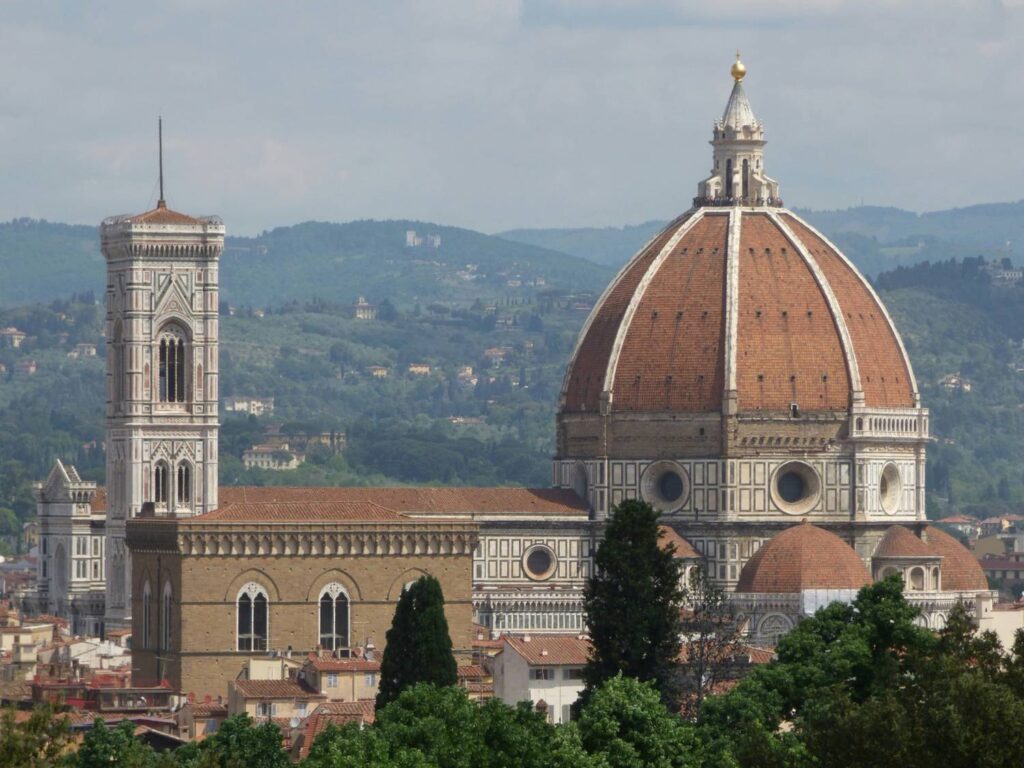
Photo by Belinda Fewings on Unsplash
Standing proudly in the historic center of Florence, the Florence Cathedral, also known as the Duomo, is an architectural marvel and a symbol of the city’s artistic and engineering genius. Dominated by the iconic Brunelleschi’s Dome, this cathedral is not only a place of worship but also a testament to innovation and Renaissance brilliance.
🌟 Highlights of Florence Cathedral and Brunelleschi’s Dome
🏰 Architectural Masterpiece
The cathedral, officially named Cattedrale di Santa Maria del Fiore, was begun in 1296 and completed in the 15th century. Its intricate Gothic façade, adorned with pink, white, and green marble, is a breathtaking sight that captivates visitors from around the world.
🏗️ Brunelleschi’s Dome — A Revolutionary Feat
Filippo Brunelleschi’s dome, completed in 1436, was a groundbreaking achievement in architecture. Spanning 45 meters (about 148 feet) in diameter, it was the largest dome in the world at the time and remains the largest brick dome ever constructed.
- Brunelleschi ingeniously engineered a double-shell dome without the use of traditional wooden scaffolding, forever changing architectural design.
- Climbing to the top of the dome rewards visitors with panoramic views of Florence and beyond—a must-do experience for any traveler.
🎨 Interior and Artwork
Inside, the cathedral is equally stunning with its vast nave, beautiful stained glass windows, and Giorgio Vasari’s famous fresco, The Last Judgment, which decorates the dome’s interior.
🕍 Baptistery of San Giovanni
Just outside the cathedral lies the Baptistery, famous for its Gates of Paradise — magnificent bronze doors sculpted by Lorenzo Ghiberti, depicting scenes from the Bible in exquisite detail.
🕰️ Giotto’s Campanile (Bell Tower)
Adjacent to the cathedral is Giotto’s Campanile, a striking bell tower that visitors can climb for another spectacular city view.
🚗 How to Get There
- By Public Transport:
Accessible by various tram and bus lines stopping near Piazza del Duomo, the cathedral’s central square. - On Foot:
Located in Florence’s historic center, it’s easily walkable from major landmarks such as Piazza della Signoria and the Uffizi Gallery.
🕒 Visitor Information
- Opening Hours:
Cathedral: Daily from 10:00 AM to 5:00 PM (hours vary seasonally).
Dome climb: Open from 8:30 AM to 7:00 PM (last ascent one hour before closing).
Baptistery and Bell Tower: Varying opening times; check in advance. - Entry Fee:
Cathedral entry is free, but tickets are required for the dome climb, baptistery, and bell tower. A combined ticket (about €18-20) covers all monuments. - Recommended Visit Duration:
Allow 2 to 3 hours if you plan to climb the dome and explore the complex.
💡 Travel Tips
- 🎟️ Book Tickets Online:
To avoid long lines and guarantee a spot for the dome climb, pre-book your tickets online well ahead of your visit. - 👟 Prepare for the Climb:
The ascent up Brunelleschi’s dome involves over 400 narrow steps—wear comfortable shoes and be prepared for tight spaces. - 📸 Best Photo Spots:
Capture stunning shots of the cathedral’s exterior from Piazza del Duomo or the nearby rooftop terraces of cafes and museums. - 🕊️ Visit Early or Late:
Early morning or late afternoon visits offer fewer crowds and softer light for photography. - 🙏 Respect the Sacred Site:
Dress modestly as this is an active place of worship.
The Florence Cathedral and Brunelleschi’s Dome embody the spirit of Renaissance innovation, artistry, and faith. Whether you admire it from the piazza, climb its dizzying heights, or step inside to witness its artistic treasures, the Duomo promises an unforgettable encounter with one of history’s greatest architectural achievements and Florence’s soul.
Ponte Vecchio
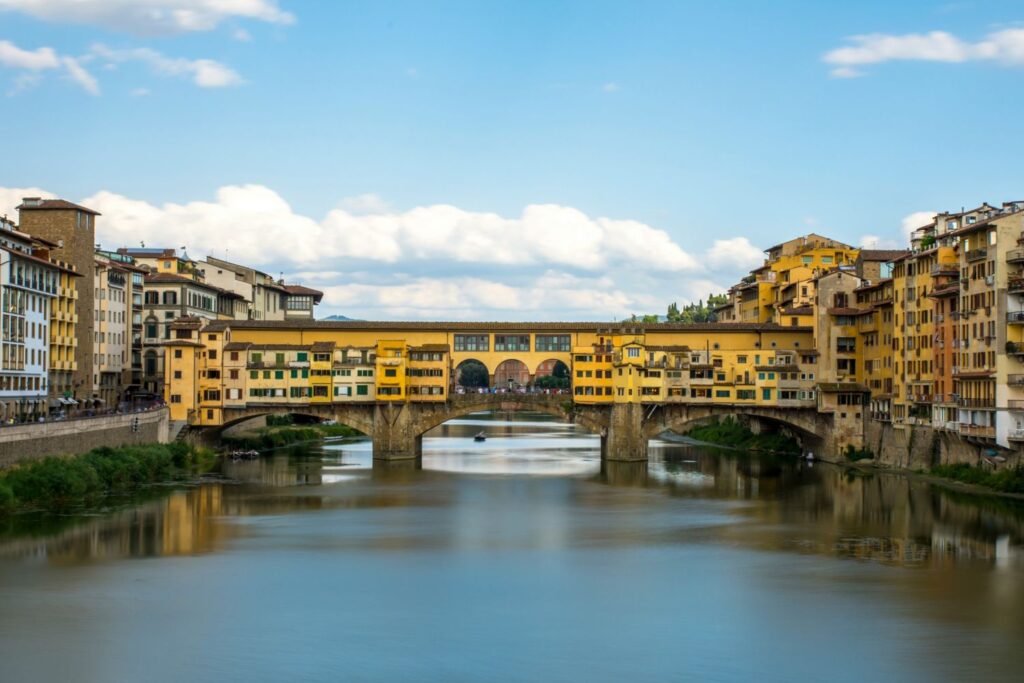
Photo by Faruk Kaymak on Unsplash
The Ponte Vecchio is more than just a bridge; it’s a symbol of Florence’s rich history, vibrant culture, and enduring charm. Spanning the Arno River, this medieval stone bridge is famed for its unique design, bustling shops, and picturesque views, making it a must-visit destination for every traveler exploring Florence.
🌟 Highlights of Ponte Vecchio
🏛️ Historic Architecture
Dating back to the 14th century, Ponte Vecchio is Florence’s oldest bridge and one of the few medieval bridges in Europe to survive intact. Its distinctive three-arched design and narrow pedestrian walkway make it an architectural gem that has witnessed centuries of Florentine life.
💎 The Jewelers’ Bridge
Unlike most bridges, Ponte Vecchio is lined with shops—originally butchers and fishmongers, but today mainly jewelers, art dealers, and souvenir sellers. Walking along, you’ll find exquisite gold and silver jewelry, unique crafts, and luxury items, making it perfect for souvenir hunting or special gifts.
🌅 Stunning Views
From the bridge, enjoy breathtaking views of the Arno River, especially during sunrise and sunset. The nearby Vasari Corridor—a secret passageway used by the Medici family—runs above the shops, adding an intriguing historical layer to the experience.
🎨 Artistic and Cultural Significance
The bridge has inspired countless artists and writers over the centuries. Its vibrant atmosphere and historic charm provide endless photographic opportunities and a romantic ambiance that captures the essence of Florence.
🎭 Seasonal Events & Festivals
Ponte Vecchio often plays host to local festivals, art exhibits, and cultural events that bring the bridge and surrounding areas alive with music, lights, and Florentine traditions.
🚗 How to Get There
- By Public Transport:
Reachable via bus lines and a short walk from Florence’s main train station (Santa Maria Novella). - On Foot:
Easily accessible by foot from key landmarks such as the Uffizi Gallery, Piazza della Signoria, and Florence Cathedral.
🕒 Visitor Information
- Opening Hours:
The bridge is open 24/7 to pedestrians, while shops generally operate from 10:00 AM to 7:00 PM. - Entry Fee:
Free to stroll across and enjoy the views. Shopping and dining are pay-as-you-go. - Recommended Visit Duration:
Allocate 30 minutes to 1 hour to fully explore the shops, take photos, and soak in the atmosphere.
💡 Travel Tips
- 📸 Best Photo Spots:
Capture the bridge from the banks of the Arno River or nearby Piazzale Michelangelo for stunning panoramic shots. - 🛍️ Shop Smart:
While browsing jewelry shops, feel free to compare prices and check for authentic craftsmanship. - 🌅 Visit at Sunrise or Sunset:
Experience the magical glow of the sun reflecting on the river and bridge—ideal for romantic walks or peaceful moments. - 👟 Wear Comfortable Shoes:
The bridge can get crowded, especially in peak season; comfortable footwear helps for leisurely strolls. - 🎁 Local Delicacies Nearby:
After crossing, explore nearby cafes and restaurants to savor Tuscan cuisine and a refreshing gelato.
The Ponte Vecchio is not just a passageway but a vibrant slice of Florence’s soul, blending history, commerce, and art. Its timeless beauty and lively atmosphere offer visitors a unique chance to connect with the city’s heritage while enjoying some of the best shopping and views in Florence. Whether you visit for the jewelry, the history, or simply the experience, Ponte Vecchio is sure to enchant.
Palazzo Vecchio
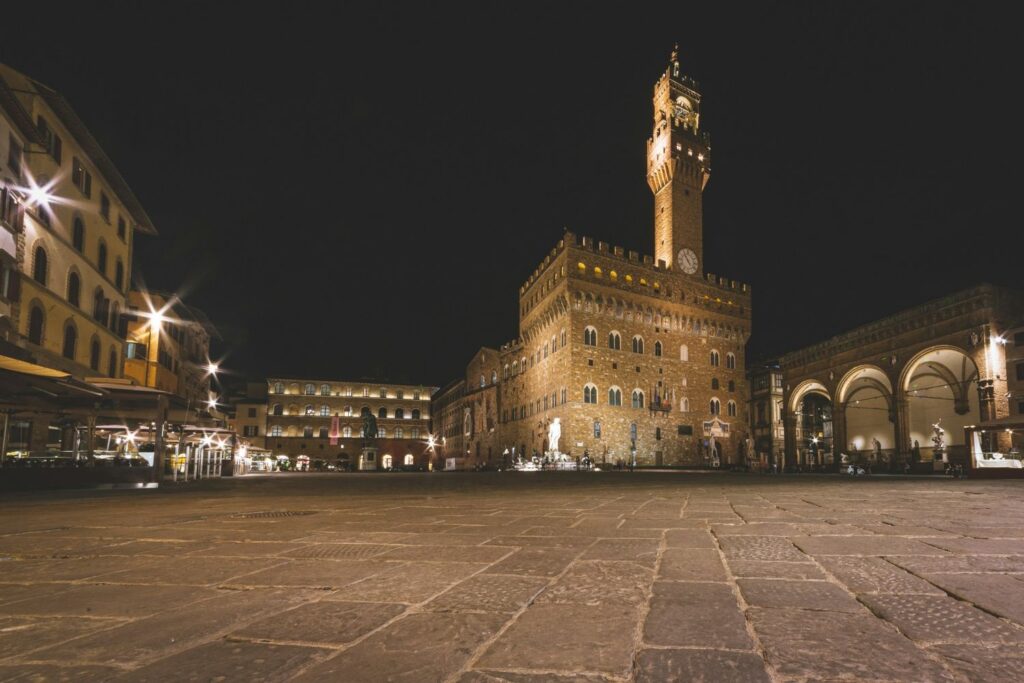
Photo by Matteo Kutufa on Unsplash
Dominating the bustling Piazza della Signoria, Palazzo Vecchio stands as a symbol of Florence’s political power, artistic heritage, and architectural grandeur. This medieval fortress-palace has been the seat of Florentine government for centuries and today serves as both a museum and the city’s town hall. Visiting Palazzo Vecchio is like stepping into a living history book filled with stories of power, intrigue, and Renaissance brilliance.
🌟 Highlights of Palazzo Vecchio
🏛️ Majestic Architecture
Constructed in the late 13th century, Palazzo Vecchio’s fortress-like exterior is marked by crenellated battlements and a towering 94-meter-high Arnolfo Tower. Its solid, imposing façade reflects the building’s original defensive purpose, designed to protect Florence’s rulers and citizens.
🎨 Rich Artistic Treasures
Inside, visitors are greeted by opulent rooms adorned with frescoes, paintings, and sculptures by masters such as Giorgio Vasari and Michelangelo. Noteworthy highlights include:
- Salone dei Cinquecento (Hall of the Five Hundred): A grand chamber with soaring ceilings and magnificent frescoes depicting Florentine military victories.
- Vasari’s Secret Passages: Hidden corridors that allowed rulers to move discreetly between rooms and the adjoining Uffizi Gallery.
- Stunning Staircases: The beautifully decorated Scala dei Giganti (Staircase of the Giants) with statues of mythological figures.
🕰️ Arnolfo Tower Climb
For panoramic views of Florence’s red-tiled rooftops, visitors can climb the Arnolfo Tower. The ascent is challenging but rewarding, offering breathtaking vistas over the city and surrounding Tuscan hills.
🏛️ Museum Experience
Palazzo Vecchio’s museum showcases Florence’s rich civic history through artifacts, period furnishings, and detailed exhibitions on the Medici family’s rule.
📜 Historic Events
The palace has hosted key events in Florentine and Italian history, including the signing of treaties, political debates, and cultural celebrations.
🚗 How to Get There
- By Public Transport:
Easily reachable by bus lines that stop near Piazza della Signoria or on foot from Florence’s main train station. - On Foot:
Situated in Florence’s historic center, it’s within walking distance of the Uffizi Gallery, Florence Cathedral, and Ponte Vecchio.
🕒 Visitor Information
- Opening Hours:
Open daily from 9:00 AM to 7:00 PM, with last admission at 6:00 PM. - Entry Fee:
Tickets cost approximately €12 to €15, with discounts available for EU citizens under 26 and free entry for children under 18. - Recommended Visit Duration:
Allocate 2 to 3 hours to fully explore the museum, climb the tower, and enjoy the palace’s treasures.
💡 Travel Tips
- 🎟️ Book Tickets Online:
To avoid long queues, especially in peak season, book skip-the-line tickets online. - 👟 Prepare for the Tower Climb:
The stairs are narrow and steep, so wear comfortable shoes and take your time. - 📸 Photography:
Photography is allowed in most areas, but flash and tripods are prohibited. Don’t miss capturing the detailed frescoes and courtyard views. - 🕊️ Visit Early or Late:
Arriving early or late in the day can help you avoid crowds and enjoy a more peaceful visit. - 🗣️ Guided Tours:
Consider joining a guided tour to learn the fascinating stories behind the palace’s art and history.
Palazzo Vecchio is not just an architectural landmark but a living monument to Florence’s rich civic and artistic legacy. Whether exploring its grand halls, admiring its art, or gazing over the city from Arnolfo Tower, visitors get a rare glimpse into the power, culture, and creativity that shaped Renaissance Florence. It’s an essential stop for history buffs and art lovers alike.
Galleria dell’Accademia
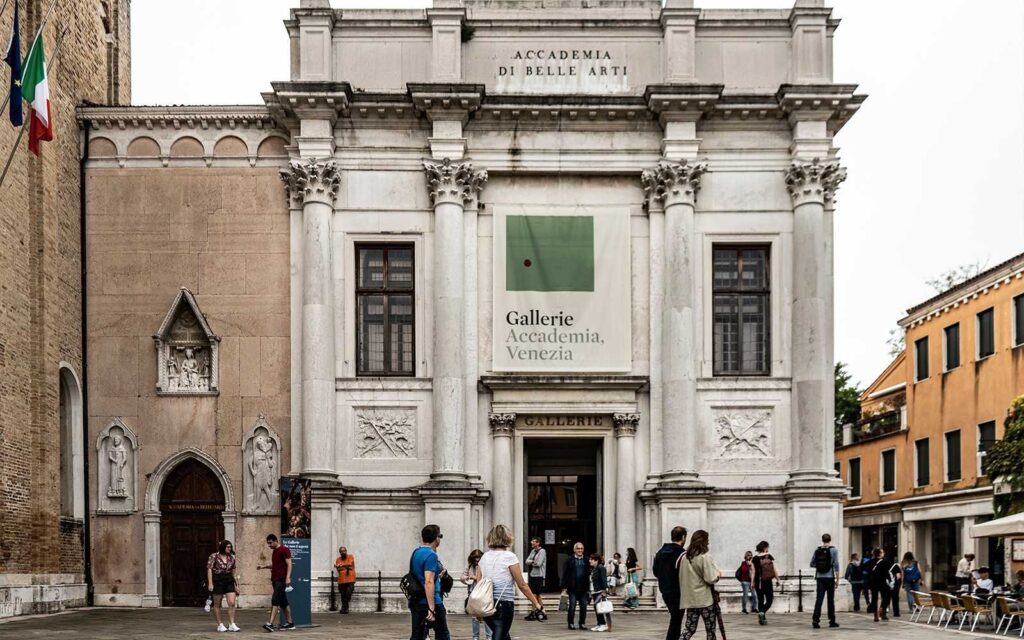
Nestled in the heart of Florence, the Galleria dell’Accademia is one of Italy’s most treasured art museums, renowned worldwide as the home of Michelangelo’s David—a masterpiece that epitomizes Renaissance art and human beauty. Beyond David, this gallery offers visitors an enriching journey through Florentine art, sculpture, and history.
🌟 Highlights of Galleria dell’Accademia
🗿 Michelangelo’s David
The star attraction, Michelangelo’s David, is an iconic symbol of strength, beauty, and artistic genius. Carved from a single block of marble between 1501 and 1504, this 17-foot-tall statue captures the biblical hero in a moment of poised confidence before battle. Its exquisite detail and lifelike anatomy leave visitors awestruck.
🖼️ Other Remarkable Sculptures
The museum houses an impressive collection of Renaissance sculptures, including unfinished works by Michelangelo such as the Prisoners (Slaves) series, which reveal the artist’s process of ‘liberating’ figures from marble blocks.
🎨 Florentine Paintings and Artifacts
Beyond sculpture, the Accademia displays important works of painting and decorative arts from the 13th to the 16th centuries, featuring artists like Botticelli, Ghirlandaio, and Pontormo. The Choir Gallery is adorned with beautiful frescoes and altarpieces.
🎻 Musical Instrument Collection
The museum also contains a fascinating collection of historical musical instruments, including rare violins crafted by the legendary Stradivari family.
🚗 How to Get There
- By Public Transport:
Easily accessible by buses that stop near Via Ricasoli in central Florence. - On Foot:
Located just a short walk from the Florence Cathedral and Piazza della Signoria, making it easy to include in your city sightseeing route.
🕒 Visitor Information
- Opening Hours:
Open Tuesday to Sunday from 8:15 AM to 6:50 PM. Closed on Mondays and select holidays. - Entry Fee:
General admission is approximately €12 to €16, with discounts available for EU citizens under 26, children, and some residents. - Recommended Visit Duration:
Allocate 1.5 to 2 hours to fully appreciate the David and other exhibits without rushing.
💡 Travel Tips
- 🎟️ Book Tickets in Advance:
Due to the museum’s popularity, pre-booking your tickets online is highly recommended to avoid long lines. - 🎧 Audio Guides & Tours:
Consider renting an audio guide or joining a guided tour to gain deeper insights into the artworks and Michelangelo’s life. - 📸 Photography Rules:
Photography is generally allowed without flash; however, some areas might restrict pictures, so be mindful of signage. - 👟 Comfortable Footwear:
The museum is compact but can get crowded—wear comfortable shoes for standing and walking. - 🚫 No Large Bags:
Large backpacks and luggage are not allowed inside; use the free cloakroom service if needed.
Visiting the Galleria dell’Accademia offers an unparalleled encounter with Renaissance art and Michelangelo’s genius. Whether marveling at David’s striking presence or exploring lesser-known sculptures and paintings, the museum is a cultural treasure that brings Florence’s artistic heritage vividly to life. It’s an essential stop for art lovers and anyone eager to experience the heart of Renaissance creativity.
Boboli Gardens
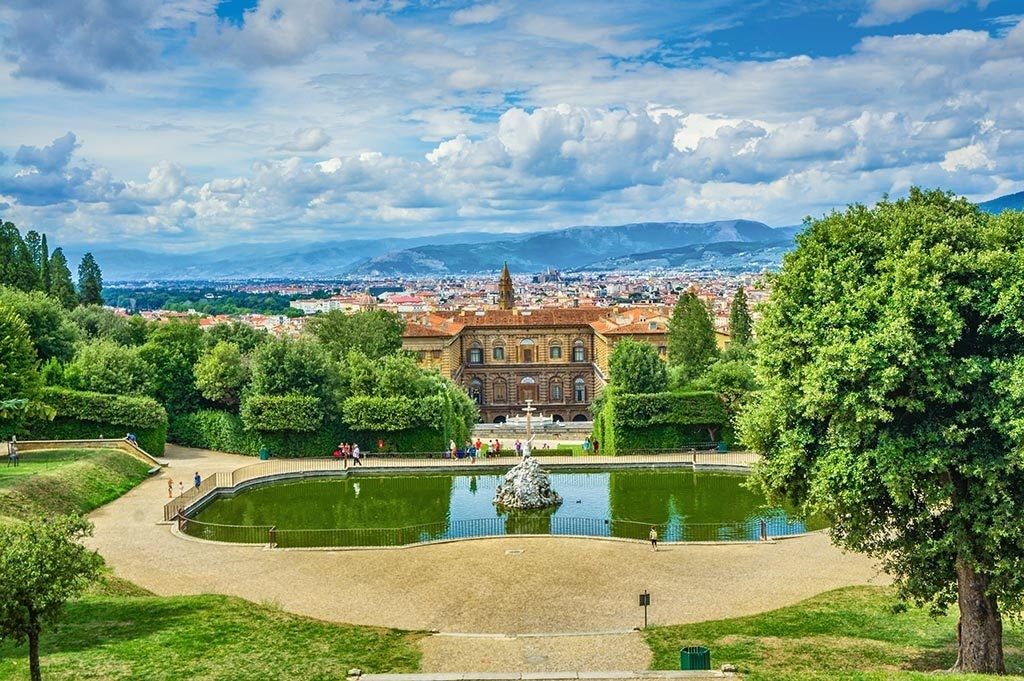
Tucked behind the grandeur of the Pitti Palace, the Boboli Gardens offer a serene and majestic escape into the heart of Renaissance landscape design. As one of Italy’s most celebrated historic gardens, Boboli Gardens blend natural beauty, exquisite sculptures, and breathtaking views, making it a must-visit for nature lovers, history enthusiasts, and art admirers visiting Florence.
🌟 Highlights of Boboli Gardens
🌿 Renaissance Garden Masterpiece
Created in the 16th century by the powerful Medici family, Boboli Gardens are a quintessential example of Italian Renaissance garden design, featuring symmetrical layouts, grand terraces, ornamental fountains, and carefully manicured greenery.
🎨 Sculptural and Architectural Gems
Throughout the gardens, visitors encounter an impressive collection of statues and fountains from various periods, including Roman antiquities, Baroque sculptures, and works by artists such as Giambologna.
- Fountain of Neptune: A striking centerpiece showcasing the god of the sea with dramatic water features.
- Isolotto Fountain: Set on a small island pond, surrounded by statues and greenery.
- Grotta del Buontalenti: A fascinating Mannerist grotto adorned with intricate decorations and stalactites.
🌅 Panoramic Views of Florence
From the garden’s elevated terraces, enjoy sweeping views of Florence’s iconic skyline — including the Duomo, Palazzo Vecchio, and rolling Tuscan hills beyond. These vantage points are perfect for photography and quiet reflection.
🌷 Varied Botanical Treasures
The gardens boast a rich variety of trees, plants, and flowers, including centuries-old cypress trees, ornamental shrubs, and seasonal blooms, providing year-round color and fragrance.
🧒 Family-Friendly Space
Wide paths, shaded groves, and open lawns make Boboli Gardens ideal for leisurely strolls, picnics, and family outings.
🚗 How to Get There
- By Public Transport:
Several buses stop near Pitti Palace, located on the south side of the Arno River. - On Foot:
Easily reachable by crossing the Ponte Vecchio from Florence’s historic center.
🕒 Visitor Information
- Opening Hours:
Open daily from 8:15 AM to 6:30 PM (last entry at 5:30 PM). Hours may vary seasonally. - Entry Fee:
Tickets cost around €10 to €15, including access to the Pitti Palace and other nearby museums with combined tickets. - Recommended Visit Duration:
Allocate 2 to 3 hours to fully explore the gardens, enjoy the sculptures, and relax in the scenic surroundings.
💡 Travel Tips
- 👟 Wear Comfortable Shoes:
The gardens cover a large, hilly area with uneven paths; comfortable footwear is essential. - 🧴 Sun Protection:
Bring sunscreen, a hat, and water, especially during summer months, as parts of the garden are exposed to the sun. - 📸 Best Photo Spots:
Don’t miss the views from the Viottolone pathway and the terraces near the Forte Belvedere. - 🌸 Visit in Spring or Fall:
These seasons showcase the gardens at their most vibrant, with pleasant weather and fewer crowds. - 🧒 Family Activities:
The open spaces are perfect for kids to run and explore safely.
The Boboli Gardens offer a tranquil yet inspiring retreat in the heart of Florence. Combining natural beauty, historic art, and breathtaking vistas, this Renaissance garden invites visitors to experience Florence’s cultural heritage beyond the city’s streets and museums. Whether you’re seeking a peaceful walk, a photo op, or a family outing, Boboli Gardens deliver a timeless and refreshing experience.
Santa Croce Basilica
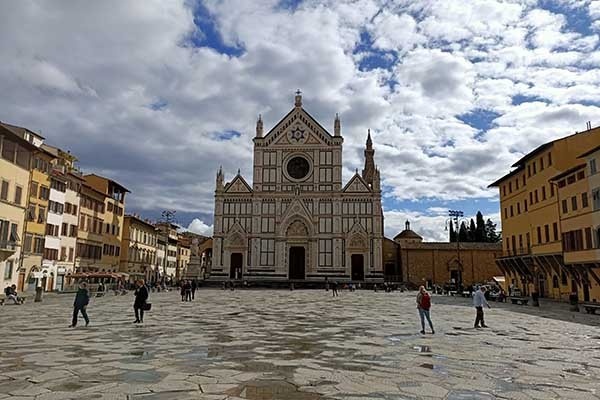
Standing proudly in one of Florence’s most historic squares, the Basilica of Santa Croce is much more than a magnificent example of Gothic architecture—it’s a treasure trove of art, culture, and the final resting place of some of Italy’s greatest minds. Often called the “Temple of the Italian Glories,” Santa Croce invites visitors to explore the rich legacy of Florence’s artistic and intellectual heritage.
🌟 Highlights of Santa Croce Basilica
🏛️ Striking Gothic Architecture
Built in the late 13th century, Santa Croce’s elegant façade is adorned with intricate marble work and colorful frescoes. Inside, soaring vaulted ceilings and beautiful stained glass windows create a serene and inspiring atmosphere that captivates visitors.
🎨 Artistic Masterpieces
Santa Croce houses incredible works by Renaissance masters such as Giotto, whose fresco cycle depicting the Life of St. Francis is among the church’s crowning jewels. The basilica’s chapels are richly decorated with paintings, sculptures, and frescoes that chronicle biblical stories and Florentine history.
⚱️ Tombs of the Greats
The basilica is the final resting place of many illustrious Italians, including:
- Michelangelo Buonarroti – Renowned sculptor and painter.
- Galileo Galilei – Father of modern science.
- Niccolò Machiavelli – Political philosopher and author.
- Giacomo Leopardi – Famous poet.
Visitors can pay homage to these luminaries and reflect on their immense contributions.
🕯️ Pazzi Chapel
Within the basilica complex, the beautifully proportioned Pazzi Chapel, designed by Filippo Brunelleschi, is a masterpiece of early Renaissance architecture and craftsmanship.
🛍️ Leather School and Museum
Santa Croce is also known for its nearby leather school, where visitors can witness traditional Florentine leather crafting—a perfect place to shop for authentic souvenirs.
🚗 How to Get There
- By Public Transport:
Numerous buses stop near Piazza Santa Croce, in the city’s historic center. - On Foot:
Easily walkable from Florence Cathedral and Piazza della Signoria, making it a great addition to your Florence walking tour.
🕒 Visitor Information
- Opening Hours:
Open daily from 9:30 AM to 5:30 PM (last entry at 5:00 PM). - Entry Fee:
Tickets are around €8 to €12, with discounts for EU residents under 26 and free entry for children under 18. - Recommended Visit Duration:
Plan for 1 to 1.5 hours to explore the basilica, tombs, and chapels thoroughly.
💡 Travel Tips
- 🎟️ Buy Tickets in Advance:
To avoid queues, especially in peak seasons, purchase tickets online beforehand. - 📸 Photography:
Photography is generally allowed without flash, so capture the stunning interiors respectfully. - 👟 Comfortable Footwear:
The basilica and surrounding square are best explored on foot, so wear comfortable shoes. - 🕊️ Attend Mass or Concerts:
For a special experience, check the schedule for religious services or classical music concerts held here. - 🛍️ Explore the Leather Market:
Don’t miss the artisan shops nearby for genuine Florentine leather goods.
The Santa Croce Basilica is a profound journey into Florence’s soul—where art, history, and the legacy of genius converge. From the stunning frescoes to the revered tombs, it offers visitors a deeply moving and enlightening experience. Whether you’re an art lover, history buff, or casual traveler, Santa Croce is a must-see highlight on any Florence itinerary.
Mercato Centrale

If you want to experience the authentic flavors and lively atmosphere of Florence, Mercato Centrale is the place to be. This bustling indoor market is a gastronomic heaven where locals and visitors alike come to savor fresh produce, traditional Italian specialties, and gourmet delights. Whether you’re a foodie, a casual eater, or simply curious, Mercato Centrale offers an unforgettable taste of Tuscan culture.
🌟 Highlights of Mercato Centrale
🥖 Historic and Architectural Charm
Established in 1874, the Mercato Centrale is housed in a grand 19th-century iron and glass structure, blending historical elegance with a vibrant market vibe. Its location in the San Lorenzo district places it at the heart of Florence’s culinary scene.
🍇 Fresh Local Produce
The ground floor is dedicated to stalls selling seasonal fruits and vegetables, fresh meats, cheeses, olive oils, and other local ingredients sourced from Tuscan farms and producers. It’s the perfect place to stock up on authentic, high-quality items.
🍝 Gourmet Food Court Upstairs
The upper floor has been transformed into a modern food hall with dozens of stalls and eateries offering everything from traditional Tuscan dishes like ribollita and bistecca alla fiorentina to international flavors, artisan pizzas, fresh pasta, and craft desserts.
☕ Coffee and Wine Bars
Sip on expertly brewed espresso or enjoy a glass of Tuscan wine while soaking up the market’s vibrant atmosphere. Many vendors also provide quick bites and snacks perfect for a casual lunch or late afternoon treat.
🍴 Cooking Classes and Events
Mercato Centrale hosts culinary workshops, tastings, and seasonal events, making it a hub for food lovers eager to deepen their knowledge of Italian cuisine.
🚗 How to Get There
- By Public Transport:
Easily accessible via multiple bus routes stopping near Piazza San Lorenzo. - On Foot:
Just a short walk from Florence Cathedral and Piazza della Signoria, making it an easy stop during your city explorations.
🕒 Visitor Information
- Entry Fee:
Entry to the market is free. Food and drinks are pay-as-you-go. - Recommended Visit Duration:
Spend 1 to 2 hours wandering the stalls, tasting samples, and enjoying a meal or drink.
💡 Travel Tips
- 🍽️ Come Hungry:
With so many delicious options, arrive ready to sample and savor. - 💳 Cash & Card:
Most vendors accept cards, but it’s good to carry some cash for smaller purchases. - ⏰ Visit Off-Peak:
Mornings and early afternoons are less crowded than evenings, offering a more relaxed experience. - 🛍️ Takeaway Options:
Many stalls offer freshly made items to take away, perfect for a picnic or snack on the go. - 🌍 Try Local Specialties:
Don’t miss tasting Tuscan cheeses, cured meats, fresh truffles, and seasonal pastries.
Mercato Centrale is a feast for the senses—a lively celebration of Florence’s culinary heritage and vibrant market culture. Whether you’re exploring the colorful stalls of fresh produce or indulging in a gourmet meal upstairs, this market provides an authentic, delicious, and unforgettable experience for every traveler.
Piazza della Signoria
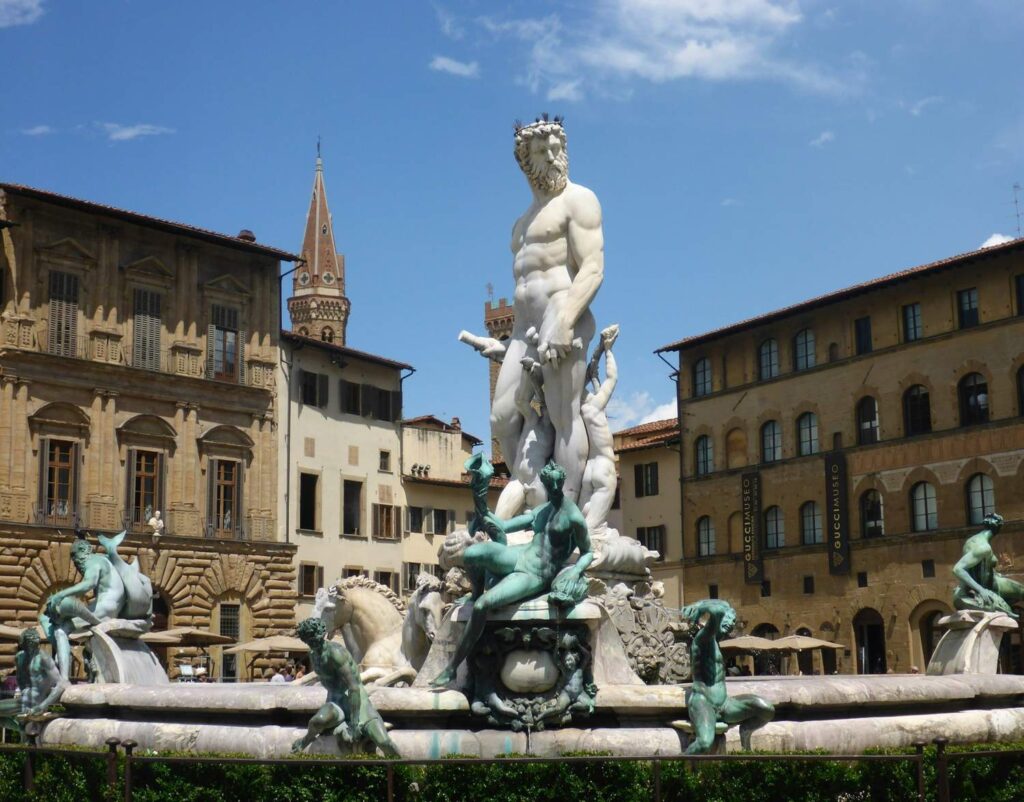
Photo by Jean Giroux on Unsplash
At the very center of Florence’s historic district lies Piazza della Signoria, a lively open-air museum and political hub that captures the essence of Renaissance Florence. This iconic square has been the stage for centuries of history, art, and civic life, making it an unmissable destination for visitors eager to immerse themselves in the city’s cultural soul.
🌟 Highlights of Piazza della Signoria
🗽 The Statue of David (Replica)
Standing proudly near the entrance of the Palazzo Vecchio, you’ll find a replica of Michelangelo’s David, symbolizing the city’s spirit of freedom and strength. The original statue is housed safely in the nearby Galleria dell’Accademia.
🏰 Palazzo Vecchio
The fortress-like town hall of Florence, Palazzo Vecchio dominates the square with its massive crenellated walls and towering clock tower. Visitors can explore its lavishly decorated interiors, Renaissance art, and panoramic views from the tower.
🎨 Open-Air Sculpture Gallery
Piazza della Signoria doubles as an outdoor art gallery, showcasing masterpieces like:
- Fountain of Neptune by Bartolomeo Ammannati, representing Florence’s naval ambitions.
- Equestrian Statue of Cosimo I by Giambologna.
- Perseus with the Head of Medusa by Cellini, housed in the Loggia dei Lanzi.
🏛️ Loggia dei Lanzi
This elegant open-air arcade displays a remarkable collection of Renaissance and classical sculptures, offering an intimate setting to admire art while enjoying the vibrant atmosphere of the square.
🎭 Bustling Social and Cultural Hub
From street performers and artists to outdoor cafes and markets, Piazza della Signoria buzzes with life day and night, making it an ideal spot for people-watching and soaking in Florence’s vibrant street culture.
🚗 How to Get There
- By Public Transport:
Numerous buses stop nearby in the city center; it’s easily accessible from major landmarks. - On Foot:
Located a short stroll from Florence Cathedral, Uffizi Gallery, and Ponte Vecchio, Piazza della Signoria fits perfectly into any walking tour of Florence.
🕒 Visitor Information
- Opening Hours:
The square is open 24/7 as a public space. Nearby attractions like Palazzo Vecchio and museums have their own visiting hours. - Entry Fee:
Free to visit the square. Entry fees apply for museums and Palazzo Vecchio interiors. - Recommended Visit Duration:
Spend at least 1 to 2 hours to fully appreciate the square’s art, architecture, and ambiance.
💡 Travel Tips
- 📸 Best Photo Opportunities:
Visit early morning or late afternoon for soft light and fewer crowds. Capture stunning shots of Palazzo Vecchio and the sculptures. - 👟 Comfortable Footwear:
The square is best explored on foot, with cobblestone paving throughout. - ☕ Enjoy a Café Break:
Relax at one of the many outdoor cafes lining the square and soak in the lively Florentine atmosphere. - 🎟️ Combine Visits:
Pair your time here with nearby highlights like the Uffizi Gallery or Ponte Vecchio for a full day of exploration. - 🎉 Watch for Events:
The square often hosts festivals, open-air concerts, and markets—check local listings for special happenings.
Piazza della Signoria is much more than a public square—it’s the pulsating heart of Florence’s rich history, art, and community life. Its statues, architecture, and vibrant street life weave together a story of a city that shaped the Renaissance and continues to inspire millions. Whether you’re admiring sculptures, exploring palatial halls, or simply soaking up the ambiance, this piazza is an essential stop on any Florence journey.
Basilica di San Lorenzo and Medici Chapels
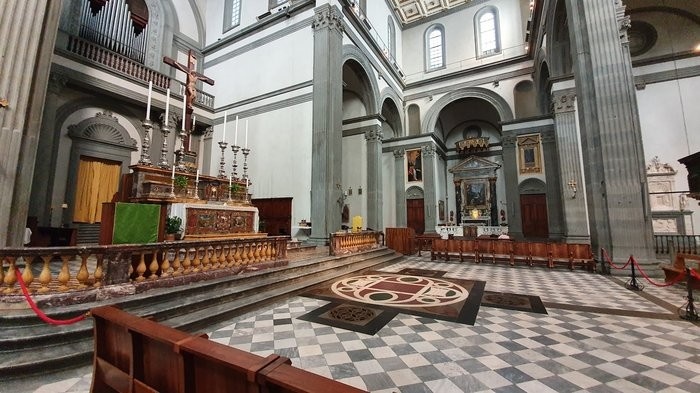
Nestled in the historic heart of Florence, the Basilica di San Lorenzo and the adjoining Medici Chapels stand as remarkable testaments to the power, art, and faith of the Medici family—Florence’s most influential dynasty. These architectural marvels showcase Renaissance innovation, lavish artistry, and the final resting place of the Medici rulers, making them a must-visit for history buffs and art lovers alike.
🌟 Highlights of Basilica di San Lorenzo
🏛️ Renaissance Architecture by Brunelleschi
One of Florence’s oldest churches, Basilica di San Lorenzo was rebuilt in the 15th century with the help of famed architect Filippo Brunelleschi, who introduced innovative classical elements. The church’s clean lines, harmonious proportions, and airy interiors reflect the ideals of the Renaissance.
🎨 Stunning Artworks
Inside, visitors find masterpieces by artists like Donatello, who crafted the St. John the Baptist statue and bronze pulpits, and Filippo Lippi, who contributed beautiful frescoes. The church’s simple yet elegant interior contrasts with its rich artistic heritage.
⛪ Historic Role
San Lorenzo served as the parish church of the Medici family, where they worshipped and celebrated key family events, making it a place steeped in history.
🌟 Highlights of the Medici Chapels
💎 The New Sacristy – Michelangelo’s Masterpiece
The New Sacristy, designed and sculpted by Michelangelo, houses the tombs of prominent Medici family members. The dramatic statues of Night and Day and Dawn and Dusk symbolize the passage of time and mortality, reflecting Michelangelo’s genius and emotional depth.
✨ The Chapel of the Princes
A grand, octagonal chapel richly decorated with colorful semi-precious stones, marble, and intricate mosaics, serving as a stunning mausoleum for the Medici grand dukes. Its lavish decoration showcases the family’s wealth and artistic patronage.
🕊️ Final Resting Place of the Medici
The chapels contain the tombs of various Medici rulers, linking visitors to Florence’s political and cultural history.
🚗 How to Get There
- By Public Transport:
Easily reachable via bus lines stopping near Piazza San Lorenzo, in the city center. - On Foot:
Just a short walk from Florence Cathedral and Mercato Centrale, perfect for a combined cultural itinerary.
🕒 Visitor Information
- Opening Hours:
Open daily from 8:15 AM to 1:50 PM, with closures on some holidays—check ahead. - Entry Fee:
Combined tickets for the Basilica and Medici Chapels cost around €10 to €15. - Recommended Visit Duration:
Allow 1.5 to 2 hours to explore both the church and chapels thoroughly.
💡 Travel Tips
- 🎟️ Buy Tickets Online:
Secure your entry in advance, especially during peak seasons, to avoid long waits. - 📸 Photography Restrictions:
Photography may be limited inside the chapels—look for signage and respect guidelines. - 👟 Comfortable Shoes:
Expect some walking and standing; wear comfortable footwear. - 🎧 Guided Tours:
Consider a guided tour to fully appreciate the historical and artistic significance. - 🛍️ Nearby Attractions:
Visit Mercato Centrale afterward for a taste of Florence’s vibrant food culture.
The Basilica di San Lorenzo and Medici Chapels offer a profound glimpse into Florence’s Renaissance glory and the enduring legacy of the Medici family. From Brunelleschi’s architectural brilliance to Michelangelo’s sculptural genius, these sites invite visitors to walk through history, art, and faith—an unforgettable experience in the cradle of the Renaissance.
Best Time to Visit Florence
Spring (April to June)
Spring is arguably the best time to visit Florence. The weather is warm but comfortable, flowers bloom across the city, and the crowds haven’t yet peaked. It’s ideal for exploring open-air markets and gardens.
Summer (July to August)
Summer brings the warmest weather but also the biggest crowds. If you don’t mind the heat, this is the time for festivals and lively street events. Just be prepared for busy museums and outdoor attractions.
Autumn (September to October)
Autumn is another fantastic time to visit, with mild temperatures, fewer tourists, and beautiful fall colors in the Tuscan countryside. It’s also harvest season, perfect for food and wine lovers.
Winter (November to March)
Winter is the quietest season in Florence. Although it can be chilly, the city is less crowded, and you can enjoy museums and churches without the crowds. Plus, festive holiday decorations add charm.
Insider Tips for Visiting Florence
- Book tickets online for major museums to avoid long lines.
- Wear comfortable shoes — Florence’s cobblestone streets are best explored on foot.
- Try authentic Tuscan cuisine in local trattorias — think ribollita, bistecca alla fiorentina, and gelato.
- Get an early start to beat the crowds at popular sites like the Uffizi and Accademia.
Final Thoughts
Florence is a city that inspires with its artistic heritage and timeless beauty. Whether you’re admiring Renaissance masterpieces or savoring Tuscan flavors, each moment here feels like stepping into a living museum. Choose the right season, plan your itinerary, and prepare to fall in love with the heart of Italy’s Renaissance.
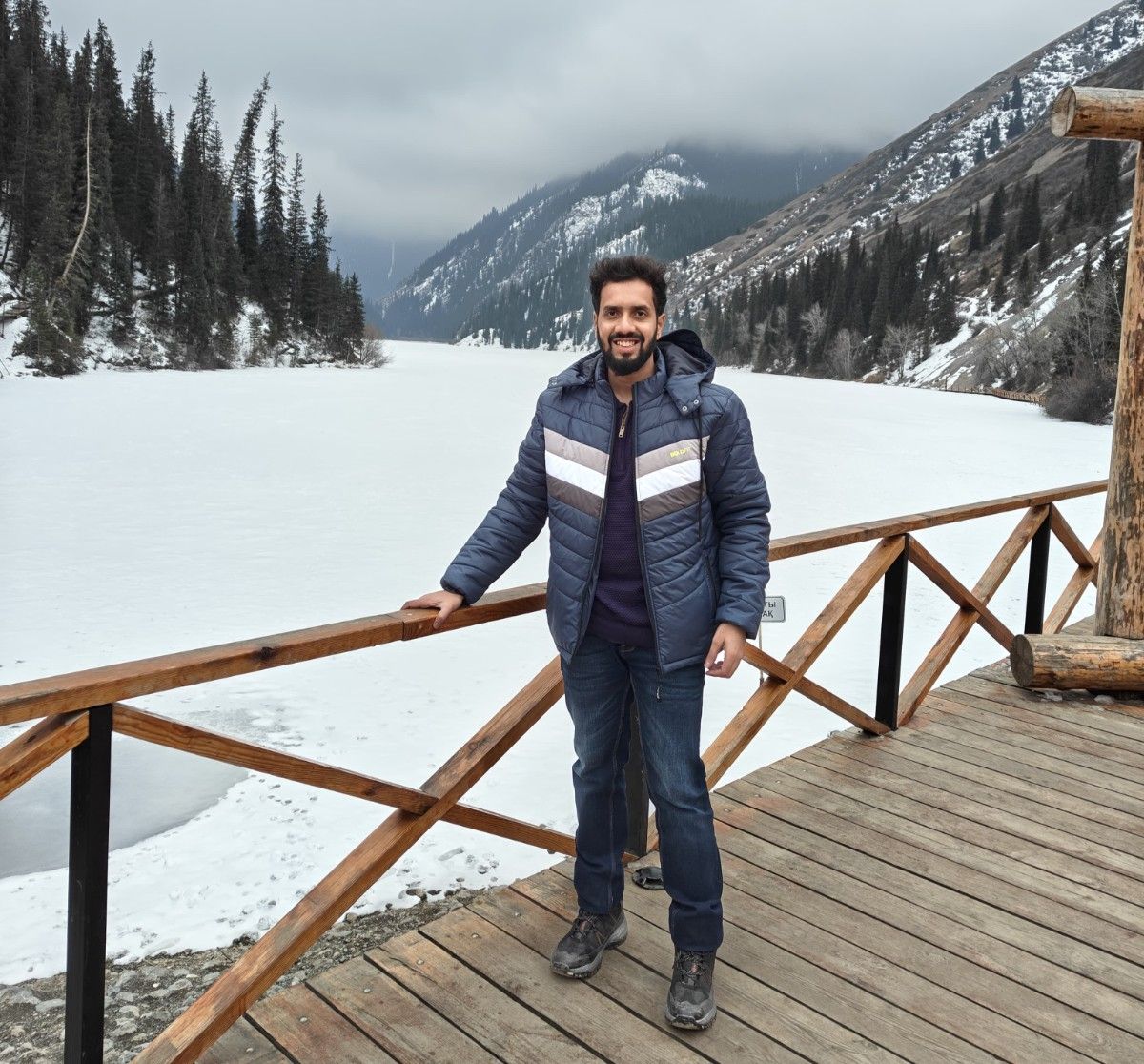
I’m Shreyash Mhashilkar — a full-stack developer by profession, and a passionate explorer of the future at heart.
With a strong foundation in both front-end and back-end , I spend my days building websites and applications that are not just functional, but scalable, intuitive, and user-focused.


